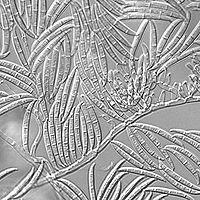
Soil application of Trichoderma asperellum GDFS1009 granules promotes growth and resistance to Fusarium graminearum in maize
Sign Up to like & getrecommendations! Published in 2019 at "Journal of Integrative Agriculture"
DOI: 10.1016/s2095-3119(18)62089-1
Abstract: Abstract Of diseases affecting maize (Zea mays), Fusarium graminearum is one of the most common pathogenic fungi that cause stalk rot. In the present study, the Trichoderma asperellum GDFS1009 strain was shown to be an… read more here.
Keywords: graminearum; trichoderma; asperellum gdfs1009; stalk rot ... See more keywords

Response of Sorghum Enhanced in Monolignol Biosynthesis to Stalk Rot Pathogens.
Sign Up to like & getrecommendations! Published in 2019 at "Plant disease"
DOI: 10.1094/pdis-09-18-1622-re
Abstract: To increase phenylpropanoid constituents and energy content in the versatile C4 grass sorghum (Sorghum bicolor [L.] Moench), sorghum genes for proteins related to monolignol biosynthesis were overexpressed: SbMyb60 (transcriptional activator), SbPAL (phenylalanine ammonia lyase), SbCCoAOMT… read more here.
Keywords: monolignol biosynthesis; overexpression; sorghum; stalk rot ... See more keywords

Maize Anthracnose Stalk Rot in the Genomic Era.
Sign Up to like & getrecommendations! Published in 2022 at "Plant disease"
DOI: 10.1094/pdis-10-21-2147-fe
Abstract: Anthracnose stalk rot (ASR) of maize results in millions of dollars in losses annually in the United States. ASR, together with anthracnose leaf blight and anthracnose top dieback, is caused by the fungus Colletotrichum graminicola.… read more here.
Keywords: anthracnose stalk; maize anthracnose; stalk rot;

First Report of Maize Stalk Rot Caused by Epicoccum latusicollum on Maize (Zea mays L.) in China.
Sign Up to like & getrecommendations! Published in 2022 at "Plant disease"
DOI: 10.1094/pdis-11-21-2392-pdn
Abstract: Maize (Zea mays L.) is the most important crop in Heilongjiang province. In July 2021, maize stalk rot was observed on approximately 10% of maize in a 2.4 ha field of Xiangfang District, Harbin City… read more here.
Keywords: epicoccum latusicollum; zea mays; maize stalk; latusicollum ... See more keywords

First Report of Fusarium meridionale Causing Stalk Rot of Ryegrass in China.
Sign Up to like & getrecommendations! Published in 2022 at "Plant disease"
DOI: 10.1094/pdis-11-21-2482-pdn
Abstract: Members of the Fusarium graminearum species complex (FGSC) are the main causing agents of head blight, seedling blight, or stalk rot in wheat and other cereals worldwide. Surveys on species composition and mycotoxin production of… read more here.
Keywords: fusarium; ryegrass; perennial ryegrass; stalk rot ... See more keywords

Fusarium species associated with stalk rot and head blight of grain sorghum in Queensland and New South Wales, Australia
Sign Up to like & getrecommendations! Published in 2017 at "Plant Pathology"
DOI: 10.1111/ppa.12697
Abstract: Historical records report Fusarium moniliforme sensu lato as the pathogen responsible for Fusarium diseases of sorghum; however, recent phylogenetic analysis has separated this complex into more than 25 species. During this study, surveys were undertaken… read more here.
Keywords: stalk rot; fusarium species; head blight;

Species Diversity and Chemotypes of Fusarium Species Associated With Maize Stalk Rot in Yunnan Province of Southwest China
Sign Up to like & getrecommendations! Published in 2021 at "Frontiers in Microbiology"
DOI: 10.3389/fmicb.2021.652062
Abstract: Maize stalk rot caused by Fusarium species is one of the most important fungal diseases of maize throughout the world. The disease is responsible for considerable yield losses and has also been associated with mycotoxin… read more here.
Keywords: stalk rot; fusarium; china; maize stalk ... See more keywords

Maize stalk rot caused by Fusarium graminearum alters soil microbial composition and is directly inhibited by Bacillus siamensis isolated from rhizosphere soil
Sign Up to like & getrecommendations! Published in 2022 at "Frontiers in Microbiology"
DOI: 10.3389/fmicb.2022.986401
Abstract: Maize stalk rot caused by Fusarium graminearum can reduce the yield of maize and efficiency of mechanized harvesting. Besides, deoxynivalenol and zearalenone toxins produced by F. graminearum can also affect domestic animals and human health.… read more here.
Keywords: siamensis; rot caused; maize stalk; stalk ... See more keywords

Integrated Gene Co-expression Analysis and Metabolites Profiling Highlight the Important Role of ZmHIR3 in Maize Resistance to Gibberella Stalk Rot
Sign Up to like & getrecommendations! Published in 2021 at "Frontiers in Plant Science"
DOI: 10.3389/fpls.2021.664733
Abstract: Gibberella stalk rot (GSR) caused by Fusarium graminearum is one of the most devastating diseases causing significant yield loss of maize, and GSR resistance is a quantitative trait controlled by multiple genes. Although a few… read more here.
Keywords: gibberella stalk; stalk rot; gsr resistance; gsr ... See more keywords

The Relationship Analysis on Corn Stalk Rot and Ear Rot According to Fusarium Species and Fumonisin Contamination in Kernels
Sign Up to like & getrecommendations! Published in 2019 at "Toxins"
DOI: 10.3390/toxins11060320
Abstract: Fusarium diseases, including corn root rot, sheath rot, stalk rot, and ear rot are frequently occurring in maize producing areas of China. Fusarium stalk rot and ear rot are the most serious diseases and often… read more here.
Keywords: stalk rot; fusarium; rot ear; corn ... See more keywords